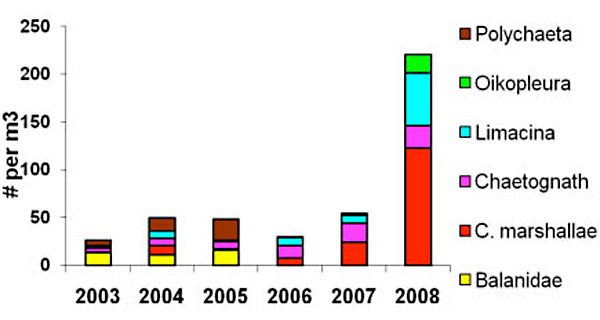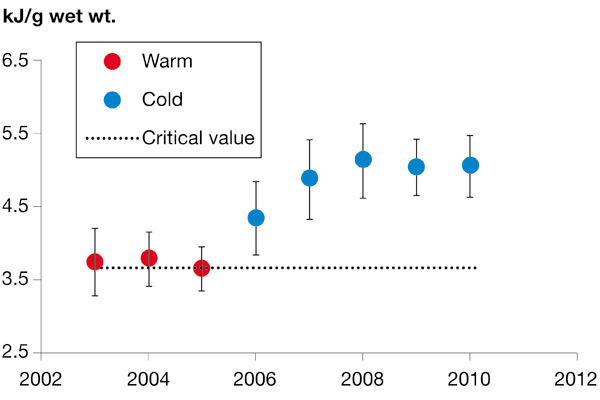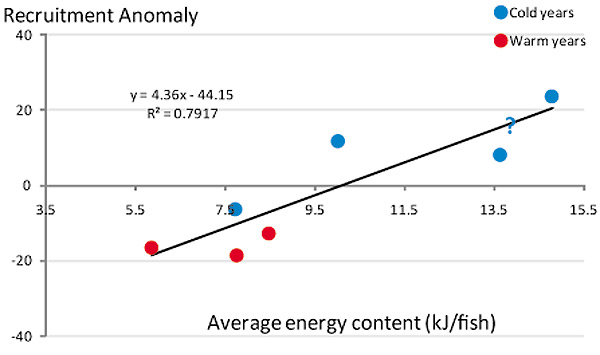
Figure 1. Mean abundance (# per m3) of large zooplankton within the southeastern Bering Sea Shelf. Data from Bongo nets tows with 505–um mesh nets.

Figure 2. Energetic status of age–0 walleye pollock during years with warm (black) and cold (gray) spring and summer sea temperatures on the eastern Bering Sea shelf. The critical value (line) is the energetic status of age–1 walleye pollock collected during spring (survived winter) in southeast Alaska.

Figure 3. The relationship of survivorship (Recruitment Anomaly) of age–1 walleye pollock to average energy content of age–0 walleye pollock collected 1 year earlier in the eastern Bering Sea.